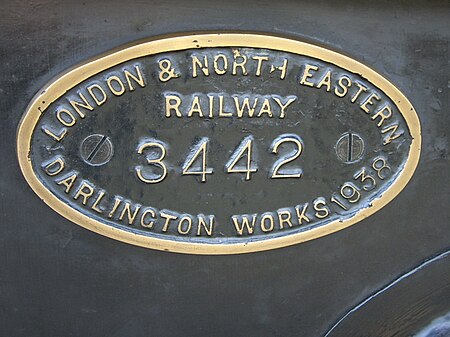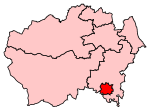Locomotion No. 1 (originally named Active) is an early steam locomotive that was built in 1825 by the pioneering railway engineers George and Robert Stephenson at their manufacturing firm, Robert Stephenson and Company. It became the first steam locomotive to haul a passenger-carrying train on a public railway, the Stockton and Darlington Railway (S&DR).
Locomotion was ordered by the Stockton and Darlington Railway Company in September 1824; its design benefitted from George Stephenson's experience building his series of Killingworth locomotives. It is believed that Locomotion No. 1 was the first locomotive to make use of coupling rods to link together its driving wheels, reducing the chance of the wheels slipping on the iron rails. However, the centre-flue boiler proved to be a weakness, providing for a poor heating surface compared to later multi-flue boilers.
In September 1825, Locomotion hauled the first train on the Stockton and Darlington Railway, and became the first locomotive to run on a public railway. On 1 July 1828, it was heavily damaged when its boiler exploded at Aycliffe Lane station, resulting in the death of its driver, John Cree. It was rebuilt, but as a consequence of the rapid advances in locomotive design, Locomotion became obsolete within a decade. It was used on the railway until 1850, after which it was converted into a stationary engine. In 1857, as a consequence of its historical importance, Locomotion was preserved and put on display. Between 1892 and 1975, it was on static display at one of the platforms at Darlington Bank Top railway station, and was then on display at the Head of Steam museum based at Darlington North Road railway station between 1975 and 2021. It is presently at the Locomotion museum in Shildon. A working replica of Locomotion has also been built and following years of operation at Beamish Museum is now on display at the Head of Steam museum.









